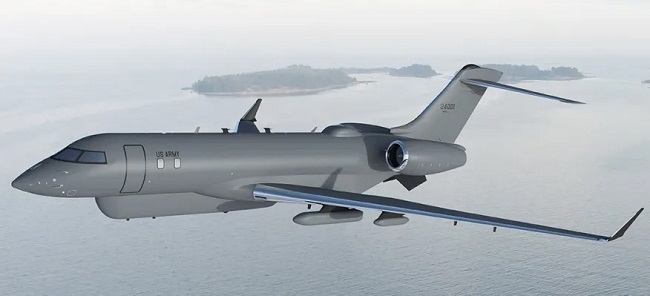
The US Army is advancing plans to launch Air-Launched Effects (ALE) drones from its HADES (High Accuracy Detection and Exploitation System) aircraft, a modified Bombardier Global 6500 business jet, to enhance survivability in contested airspace during near-peer conflicts.
The first of 14 HADES platforms, delivered in November 2023, integrates the RAPCON-X SIGINT suite and outperforms existing turboprop ISR assets in speed, sensor payload, and operational range.
A January 2024 request for information (RFI) outlines a demonstration by 2026 to test ALE compatibility, which includes drones for reconnaissance, electronic warfare, targeting, and decoy roles. While HADES is the primary testbed, the program may expand to other GLOBAL 6500-derived platforms like the ATHENA-S and ATHENA-RADAR variants.
Technical specifications propose mounting ALEs on sub-wing pylons, with total system weights capped at 816 kg for internal stations and 272 kg for external hardpoints. The Army categorizes ALEs into "large" (up to 102 kg, 650 km range, 60-minute endurance) and "small" (under 45 kg, 150 km range, 60-minute endurance), aligning with systems like the Anduril ALTIUS-600 drone.
Launch mechanisms under consideration include gravitational separation, rocket-assisted deployment, and parachute systems, all operable during standard cruise flight at altitudes above 12,500 meters and speeds exceeding 400 knots. The initiative requires upgraded onboard communication systems for ALE control, potentially involving RF/laser data links and C2 hardware.
While HADES lacks stealth capabilities, it will operate within the Multi-Domain Sensing System (MDSS) – a layered network including high-altitude gliders and stratospheric balloons – to avoid enemy air defences. ALEs may further augment this architecture by providing stand-in jamming or defensive decoy functions.








.png)
